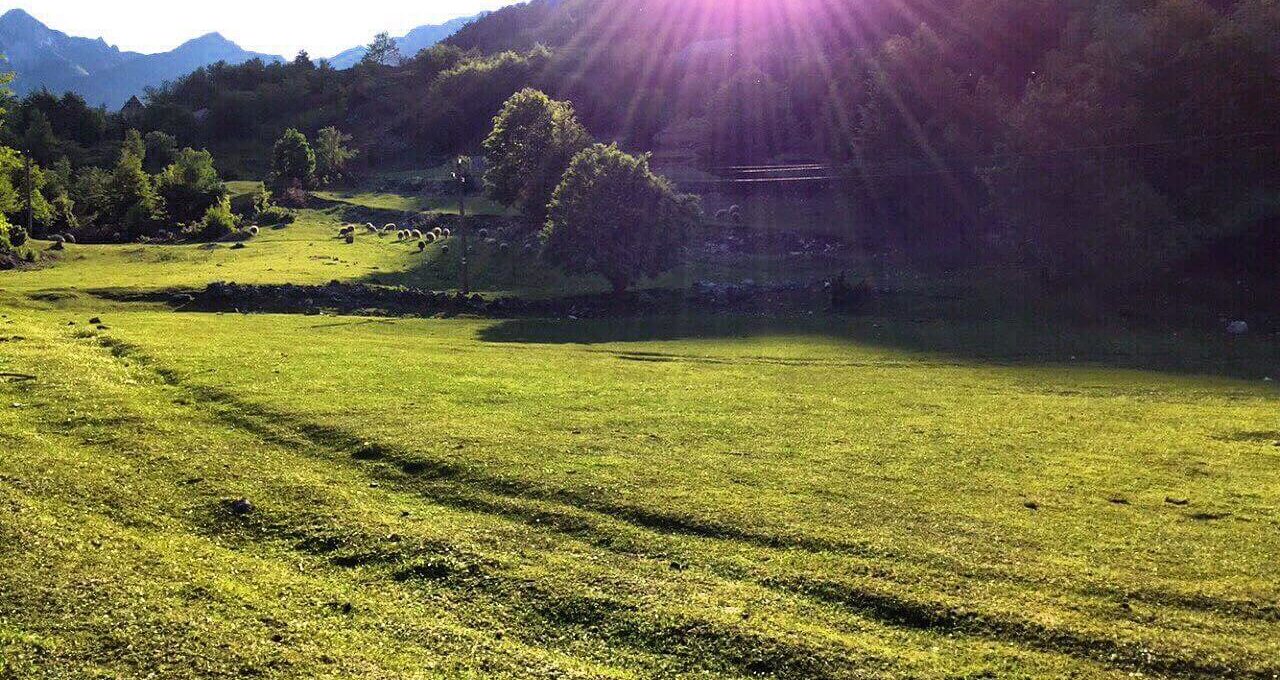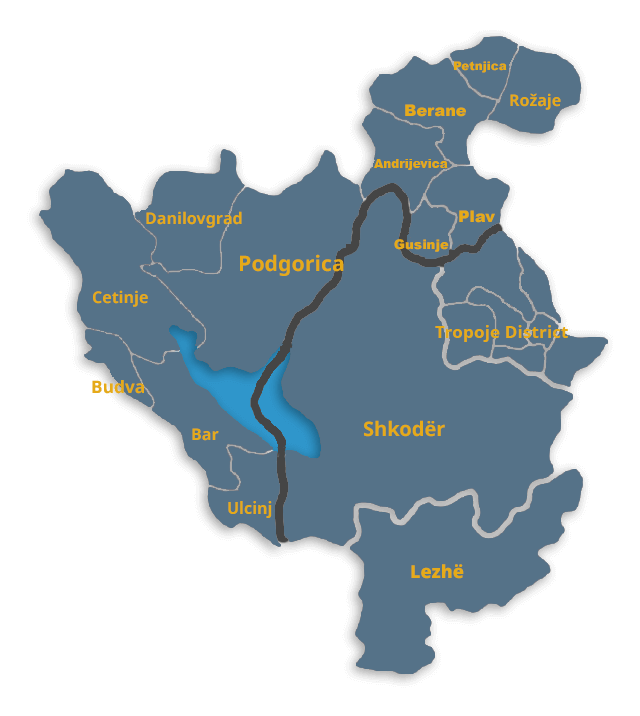Montenegro-Albania 2014-2020

IPA Cross-Border Cooperation Programme

IPA Cross-Border Cooperation Programme
Montenegro-Albania 2014-2020
The programme area for the Cross-Border Programme between Montenegro and Albania covers a territory of 11,970 km2 with a total population of about 749,257 inhabitants. The territory of the programme area is somewhat bigger in Albania accounting for 52.1 % as against 47.9 % in Montenegro.
The length of borderline between two countries is 244 km of which 38 km are water border composed of Scadar-Shkodra lake, Adriatic sea and rivers. There are three operational border-crossing points. The programme area in Montenegro covers a territory of 5,745 km2. It comprises 12 municipalities and 615 settlements – towns and villages – with a total population of 379,366 habitants. It borders with Albania to the east, and Kosovo and Serbia in the north-east. Montenegro has established division into regions corresponding to NUTS classification, which is approved by EUROSTAT and according to the aforementioned division, Montenegro is one region in all three NUTS levels.
For the purposes of strategic planning the country is divided into three geographic regions, northern, central and southern. Municipalities from the programming area: Andrijevica, Berane, Plav, Gusinje, Petnjica and Rožaje; Podgorica, the capital of Montenegro, Cetinje and Danilovgrad; and Budva, Ulcinj and Bar.
The programme area in Albania includes the regions of Shkodra and Lezha and the Tropoja district with a total territory of 6,225 km2 and a population of 369,891 inhabitants. Shkodra region has the largest population of 215,347 inhabitants followed by Lezha with 134,027 inhabitants and Tropoja district with only 20,517 inhabitants. Albania has an administrative division equivalent to the NUTS II 31 but not yet implemented.
Overall, the programming area has 23 municipalities and a total of 1,114 settlements – towns and villages. Seven municipalities are directly on the border, Plav, Andrijevica, Podgorica, Gusinje and Ulcinj in Montenegro and Shkodra and Koplik in Albania. The borderline crosses through the high mountain ranges of Prokletije/Bjeshket e Nemuna (Albanian Alps) and the Shkodra Lake to end up in the Adriatic sea. Border crossing point, especially those of Sukobine -Muriqan and Božaj -Hani i Hotit are easily accessible throughout the year, whereas improvement are being made to the road infrastructure of the Vermosh-Gercan border crossing point which is at high altitude and difficult to pass during winter.
The programme area for the Cross-Border Programme between Montenegro and Albania covers a territory of 11,970 km2 with a total population of about 749,257 inhabitants. The territory of the programme area is somewhat bigger in Albania accounting for 52.1 % as against 47.9 % in Montenegro.
The length of borderline between two countries is 244 km of which 38 km are water border composed of Scadar-Shkodra lake, Adriatic sea and rivers. There are three operational border-crossing points. The programme area in Montenegro covers a territory of 5,745 km2. It comprises 12 municipalities and 615 settlements – towns and villages – with a total population of 379,366 habitants. It borders with Albania to the east, and Kosovo and Serbia in the north-east. Montenegro has established division into regions corresponding to NUTS classification, which is approved by EUROSTAT and according to the aforementioned division, Montenegro is one region in all three NUTS levels.
For the purposes of strategic planning the country is divided into three geographic regions, northern, central and southern. Municipalities from the programming area: Andrijevica, Berane, Plav, Gusinje, Petnjica and Rožaje; Podgorica, the capital of Montenegro, Cetinje and Danilovgrad; and Budva, Ulcinj and Bar.
The programme area in Albania includes the regions of Shkodra and Lezha and the Tropoja district with a total territory of 6,225 km2 and a population of 369,891 inhabitants. Shkodra region has the largest population of 215,347 inhabitants followed by Lezha with 134,027 inhabitants and Tropoja district with only 20,517 inhabitants. Albania has an administrative division equivalent to the NUTS II 31 but not yet implemented.
Overall, the programming area has 23 municipalities and a total of 1,114 settlements – towns and villages. Seven municipalities are directly on the border, Plav, Andrijevica, Podgorica, Gusinje and Ulcinj in Montenegro and Shkodra and Koplik in Albania. The borderline crosses through the high mountain ranges of Prokletije/Bjeshket e Nemuna (Albanian Alps) and the Shkodra Lake to end up in the Adriatic sea. Border crossing point, especially those of Sukobine -Muriqan and Božaj -Hani i Hotit are easily accessible throughout the year, whereas improvement are being made to the road infrastructure of the Vermosh-Gercan border crossing point which is at high altitude and difficult to pass during winter.




